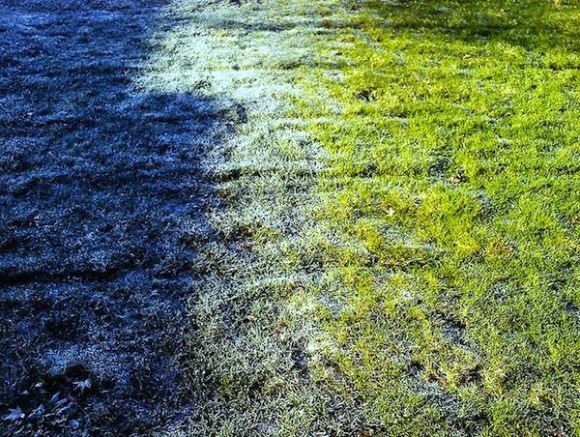
You bought grass sod for your lawn because you were tired of the lackluster, inconsistent results you were getting from seeding. Western Turf Farms delivery trucks arrived at your place, your trusted landscaper laid down the rolls of grass and in just days, it was already looking lush, green and healthy. But the fall is almost over and if you haven’t gotten around to winterizing your lawn yet, your investment in landscaping might go to waste by the spring.
How do you winterize your lawn so it looks great in all seasons? Let’s go over the basics:
Your grass sod lawn is a living organism – and autumn is feeding time. Your grass has already pretty well stopped growing by now, as it focuses on taking in nutrients in between seasons.
Use a spreader to get the fertilizer on the lawn in a relatively uniform distribution – as with irrigation, giving too much can be as harmful as too little. Check the instructions that are on the bag you buy in the store; use as directed. To keep your lawn healthy, you should fertilize with the change of every season – but this time is really important.
We can provide the fertilizer you need when we deliver our grass turf – so ask about it if you need it!
Your lawn needs to breathe. The problem is that thatch (dead organic matter such as leaves, shoots, stems) can create a layer between your lawn and the outside world just an inch or two away. That makes it hard for air, water and nutrients to get into the soil, where it can actually help your grass sod thrive.
There’s a simple solution: aerate your lawn. To do it manually, you can use aeration poles that look a lot like pogo sticks to poke holes in your lawn a few inches deep. You can rent motorized aeration equipment – but be forewarned that while it speeds up the process, it can take some heavy lifting. Doing your aeration the old fashioned way can actually mean less of a workout (and less recovery time needed after).
Our grass sod is bred to last through multiple seasons, but over the long term, you may want to fine-tune your grass with some extra seed. If you’re finding patchy sections that didn’t get enough water, fertilizer or some other variable, we also sell seed that’s uniform with the varietal you installed. Treat this task with moderation to avoid uneven clumping of grass sections.
It’s important to remember in the fall to set your mower about an inch higher than when you cut in the summer. Cutting too short in the colder weather can distress the vegetation. Leave the clippings on the lawn to provide additional nutrients for the spring. Do rake away clumps of thatch that are too thick and likely to suffocate your lawn over the cooler season.
Those are the basics of winterizing your lawn. Take care of it now and you’ll have a great looking lawn again in the spring growing season.
Order fresh sod now or request a custom quote for your project.
Save with a Yearly membership. Custom fertilizer program. Fertilizer, topsoil, seed delivered to your door before you need it. Don’t forget, we will remember for you!
Western Turf Farms Abbotsford
39183 No.5 Road Abbotsford, BC V3G 2G3
Western Turf Farms Langley
7880 240 Street Langley, BC V1M 3P9
© Copyright 2025, all rights reserved by Western Turf Farms. By using our website you agree to our Disclaimer and Privacy Policy.